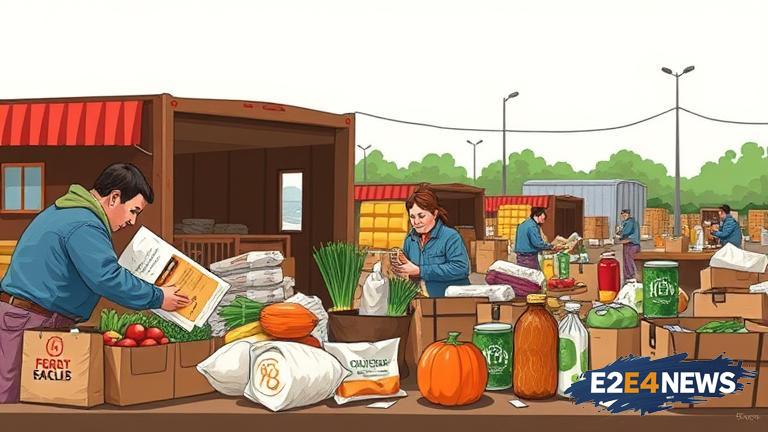The recent cuts to federal funding for food assistance programs have led to a significant increase in food rescue efforts across the United States. Food rescue organizations, which collect surplus food from retailers, restaurants, and other sources, are playing a crucial role in helping to feed those in need. These organizations are working tirelessly to redistribute surplus food to food banks, pantries, and other agencies that provide food assistance to vulnerable populations. As a result, food rescue efforts are growing in response to the federal funding cuts, with many organizations reporting an increase in demand for their services. The federal funding cuts have affected a wide range of programs, including the Supplemental Nutrition Assistance Program (SNAP) and the Emergency Food Assistance Program (TEFAP). These programs provide critical support to low-income individuals and families, and the cuts have left many without access to adequate nutrition. Food rescue organizations are helping to fill this gap by providing fresh, nutritious food to those in need. One of the key challenges facing food rescue organizations is the logistics of collecting and distributing surplus food. Many organizations rely on volunteers and donations to support their operations, and the recent funding cuts have put a strain on these resources. Despite these challenges, food rescue organizations are finding innovative ways to expand their services and reach more people in need. Some organizations are using technology, such as mobile apps and online platforms, to connect with food donors and recipients. Others are partnering with local businesses and community groups to increase their capacity and reach. The growth of food rescue efforts is also being driven by increasing awareness of food waste and its impact on the environment. It is estimated that up to 40% of the food produced in the United States goes uneaten, with much of it ending up in landfills. Food rescue organizations are helping to reduce this waste by redistributing surplus food to those in need. In addition to providing food assistance, food rescue organizations are also helping to support local economies and promote sustainability. By reducing food waste and supporting local food systems, these organizations are contributing to a more equitable and environmentally-friendly food system. The federal funding cuts have also highlighted the importance of community-based solutions to addressing food insecurity. Food rescue organizations are often embedded in local communities and are well-positioned to respond to the unique needs and challenges of their areas. As the federal funding cuts continue to take effect, it is likely that food rescue efforts will play an increasingly important role in addressing food insecurity. Food rescue organizations are calling on policymakers to restore funding to critical food assistance programs and to support the growth of food rescue efforts. In the meantime, these organizations will continue to work tirelessly to provide food assistance to those in need and to promote a more sustainable and equitable food system. The impact of the federal funding cuts on food rescue efforts is being felt across the country, with organizations in urban and rural areas alike reporting an increase in demand for their services. Food rescue organizations are responding to this demand by expanding their operations and exploring new ways to connect with food donors and recipients. As the demand for food rescue services continues to grow, it is likely that these organizations will play an increasingly critical role in addressing food insecurity in the United States. The growth of food rescue efforts is a testament to the power of community-based solutions and the importance of supporting local food systems. By working together to reduce food waste and promote sustainability, we can build a more equitable and environmentally-friendly food system that supports the needs of all individuals and communities.
